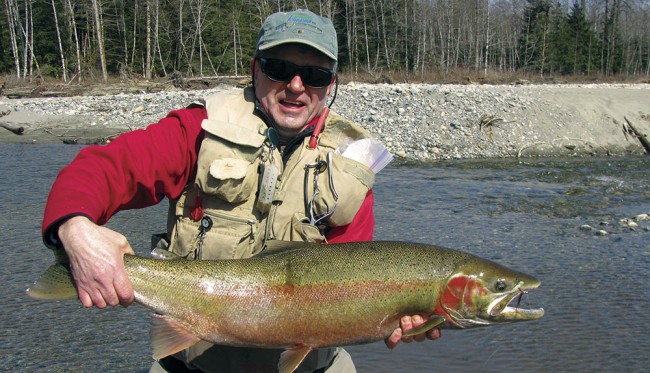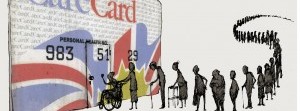
Photo Credit: Cal Tant
On the fly: The Kitimat River: Fishing by taxicab
Kitimat is named after its original First Nations inhabitants, the Gitamaat, which in Tsimshian means, “People of the falling snow.” The Kitimat River is about 80 kilometres—small by BC standards—draining a basin of 2,054 square km. Small rivers are good for anglers, however, because the swollen stream will often recede and become clear within a day after a heavy rainfall.
Travelling south from Terrace on Highway 37, you’ll meet the Kitimat River about 25 km north of Kitimat. From this point, the river generally follows the highway, runs through the city and eventually empties into Douglas Channel’s Kitimat Arm. Along Highway 37, you’ll pass many dirt roads to the right; all will take you directly to some of the popular fishing spots on the river or, if you aren’t driving a four-by-four (recommended in wet weather conditions), walking trails will get you there. If hiking the trails, wear a bear bell and make noise—this is grizzly territory.
Accommodations are excellent in Kitimat, although the area is currently experiencing a major industry boom and hotel rooms could be difficult to find. Riverside camping at Radley Park in the city is first class, but advanced reservations are recommended. Closer to Terrace, Lakelse Lake Provincial Park is a good option if you don’t mind driving 15 to 40 km to the river.
The Kitimat boasts excellent runs of salmonids: Chinook (spring) and chum salmon during summer months, pinks and cohos during late summer or early fall, a small winter run of wild steelhead and a good run of hatchery-raised steelhead. Cutthroat trout fishing is available year-round. The fishery is augmented by the Kitimat River Hatchery, operated by Fisheries and Oceans Canada and managed by my friend Markus Feldhoff, where they annually raise and release up to 4 million salmonids into the Kitimat River. Call in advance (250-639-9888) to book a tour through this fine facility.
All salmonid species will take flies. Depending on time of year and what species you are fishing for, be prepared with fly patterns that are dark-coloured with hues of black, purple and blue for dark-sky days and designs that are bright-coloured with tones of red, pink, chartreuse, yellow and silver for those awesome sunny Northwest days. Cutthroat trout enjoy small minnow patterns such as size 12 Muddler Minnows.
The river has special restrictions for its fishery: hatchery steelhead daily quota is one fish and monthly quota is 10; there is a bait ban from May 15 to Aug. 31; powered boats are prohibited. One of the best methods I have found when drift fishing the Kitimat alone is to put in upriver, call a cab when I hit city limits near Cable Car run, take out at Radley Park below the Haisla Bridge, and have the cabbie take me back to my vehicle.




